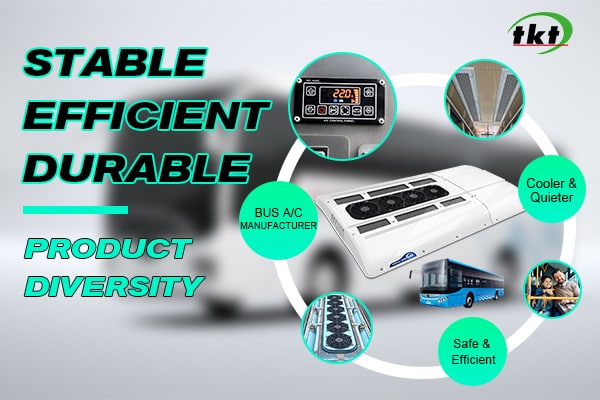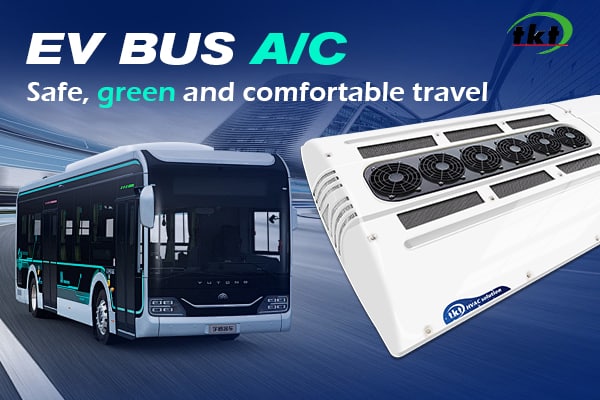Selecionar o sistema de ar condicionado certo para o seu ônibus é fundamental para garantir uma viagem confortável aos passageiros, especialmente durante o tempo quente. Com uma infinidade de opções disponíveis, it can be overwhelming to determine which system best meets your needs. In this comprehensive guide, we will delve into the different types of bus air conditioning systems, their components, performance standards, e como escolher a opção mais eficiente e econômica para o seu veículo.
Compreendendo os sistemas de ar condicionado para ônibus
Tipos de sistemas de ar condicionado
Os sistemas de ar condicionado de ônibus podem ser categorizados em dois tipos principais: Fabricante de Equipamento Original (OEM) sistemas e sistemas de reposição.
– Sistemas OEM: Esses sistemas são integrados ao ônibus durante sua montagem. Eles são projetados para funcionar perfeitamente com os sistemas HVAC existentes no ônibus, garantindo ótimo desempenho e confiabilidade.
– Sistemas de pós-venda: Pós-produção instalada, esses sistemas podem ser vinculados aos sistemas HVAC de painel existentes ou funcionar como unidades autônomas. Eles oferecem flexibilidade e podem ser adaptados a requisitos específicos de resfriamento.
Nos últimos 24 anos, A solução TKT EV cresceu e se tornou o OEM preferido para 100% dos condicionadores de ar de ônibus e sistemas de gerenciamento térmico de baterias da China, como Yutong, Nanquim Jinlong, Xiamen Jin Long, etc.. (Ar condicionado para ônibus), CIMC, Xinfei, Hongyu, etc.. No mercado internacional, TKT é o OEM da Tata Motors, Tatá Marco Polo, Daewoo Motores, etc., e exporta para mais 85 países com centros de vendas e serviços.
Componentes chave
A sistema de ar condicionado de ônibus de alta qualidade compreende vários componentes cruciais:
– Compressor: O coração do sistema, typically mounted on the engine or a separate power source, compresses the refrigerant and circulates it through the system.
– Evaporador: Located in the driver’s area or throughout the bus, the evaporator cools the air by absorbing heat.
– Condensador: Mounted on the roof or skirt, it releases the absorbed heat to the outside air.
– Controles: These include switches, thermostats, and electronic controls to manage the system’s operation.
– Additional Evaporators: These can be hanging or flush-mounted, ensuring uniform cooling throughout the bus.

Selecting the Right System
Performance Standards
When selecting an air conditioning system for ev buses, it is essential to consider the performance standards set by industry authorities. The National Congress of School Transportation and the American Public Transit Association provide guidelines to ensure systems meet minimum cooling requirements.
– National School Bus Specifications:
— Standard Performance: The system should cool the interior from 100°F to 80°F within 30 minutos.
— High Performance: O sistema deve resfriar o interior de 100°F a 70°F dentro 30 minutos.
– Especificações da Associação Americana de Transporte Público:
— Requisitos de capacidade e desempenho: O sistema deve reduzir a temperatura do habitáculo de 115°F para 95°F dentro 20 minutos após a partida do motor.
— Condições ambientais mais quentes: O sistema deve reduzir a temperatura de 110°F para 70°F (±3°F) dentro de 30 minutos para 30-, 35-, e ônibus de 40 pés.
Considerações sobre capacidade de BTU
Compreendendo o BTU (Unidade Térmica Britânica) capacity is crucial in evaluating the effectiveness of an AC system unit. BTU measures the amount of heat required to raise the temperature of one pound of water by one degree Fahrenheit.
– Gross Capacity: This is the lowest capacity among the evaporator, condensador, and compressor, representing the system’s weakest link.
– Net Capacity: Though rarely used, this method employs multiple simultaneous equations to balance the system.
It is important to note that there is no universal BTU rating method in the bus air conditioning industry. The most reliable way to assess a system’s performance is through a pull-down test, where the system’s ability to cool the bus interior is measured under specified conditions.
Practical Recommendations
– Work with Your Dealer: Collaborate with your dealer to select a system tailored to your bus’s cooling needs. Consider the power draw of the system to ensure it does not overburden the vehicle’s alternator capacity.
– Performance Pull-Down Test: Require a performance pull-down test to evaluate the system’s ability to cool the bus interior effectively.
– Standardized BTU Ratings: Insist on BTU/hour capacities recorded in an industry-standard format, such as those provided by the Society of Automotive Engineers (SAE).
Conclusão
Escolhendo o right air conditioning system for your bus requires careful consideration of various factors, including system type, components, performance standards, and BTU capacity. By adhering to industry guidelines and working closely with your dealer, you can ensure that your bus is equipped with an efficient and effective cooling system, providing a comfortable environment for passengers and enhancing the overall travel experience.




